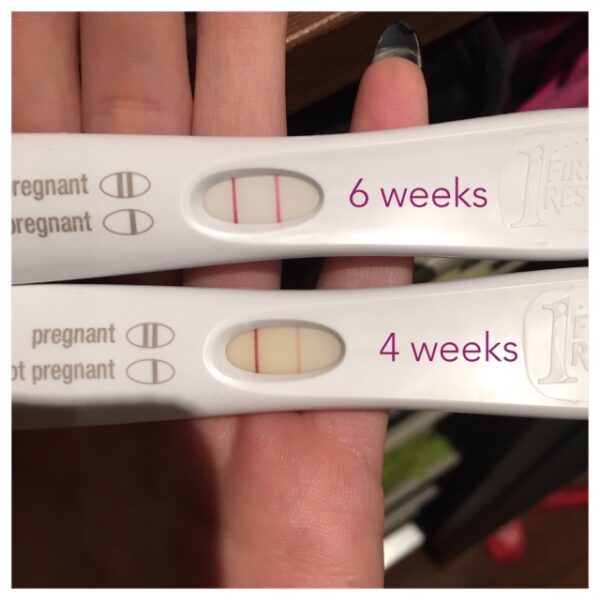Dye Stealer Pregnancy Test: Meaning & What You Need To Know
Does a darker line on a pregnancy test signal a thriving pregnancy? The "dye stealer" phenomenon, where the test line eclipses the control line, can be a fascinating aspect of early pregnancy, hinting at robust hormone levels, but it's not the full story.
The quest for early confirmation of pregnancy is a journey many women undertake. Home pregnancy tests have become a cornerstone of this process, offering a relatively simple and accessible method for detecting pregnancy. The underlying principle of these tests is the detection of human chorionic gonadotropin (hCG), a hormone produced by the placenta shortly after implantation. However, there's a particular result that often sparks excitement and curiosity: the "dye stealer."
What exactly is a dye stealer? It's a term used to describe a pregnancy test result where the test line the line indicating a positive result appears significantly darker than the control line. The control line is the line that confirms the test is working correctly. This striking difference often leads to questions and speculation about the pregnancy's status.
The "dye stealer" effect occurs because of the elevated levels of hCG in the urine. As the pregnancy progresses, the placenta produces increasing amounts of hCG. The test strips in pregnancy tests contain antibodies that bind to hCG. When the hCG level is high enough, it saturates these antibodies. This saturation causes the test line to become darker, seemingly "stealing" dye from the control line. The result is a visually strong, often very dark test line.
It's important to understand that not all pregnancy tests are designed to display the "dye stealer" effect. Some tests might have a maximum intensity limit for the test line. Additionally, individual hormonal responses and test sensitivity can vary, leading to different results for different women and even different tests.
Here's a table outlining some key aspects of the "dye stealer" pregnancy test:
| Feature | Description |
|---|---|
| What it is | A pregnancy test result where the test line is darker than the control line. |
| Cause | High levels of human chorionic gonadotropin (hCG) in the urine. |
| Timing | Often seen around 18 days past ovulation (dpo) or 4 weeks, but can vary. |
| Meaning | Indicates high hCG levels, a potential sign of a progressing pregnancy. |
| Limitations | Not a guarantee of a healthy pregnancy; absence of a dye stealer doesn't mean a problem. |
While a "dye stealer" can be a promising sign, it's essential to understand its limitations. A strong positive test result, including a dye stealer, doesn't guarantee a successful pregnancy. It's merely an indication of elevated hCG levels at that particular point in time.
Conversely, the absence of a "dye stealer" doesn't necessarily signal a problem. Many healthy pregnancies do not exhibit this phenomenon, and other factors can influence the test results. The tests themselves vary in sensitivity, and hormonal responses can differ from one woman to another.
The presence of the hormone hCG, is a critical indicator of pregnancy. This hormone is produced by the cells that will eventually develop into the placenta. The levels of hCG rise rapidly in early pregnancy, approximately doubling every two to three days. This rise is what a pregnancy test detects. A dye stealer simply reflects a higher concentration of this hormone in the urine at the time of testing.
The level of hCG is not just a yes or no factor; it's a measurement. Unlike regular home pregnancy tests that just confirm the presence of hCG, a "dye stealer" test indirectly measures the amount of the hormone. The test line's intensity is directly related to the hCG concentration. The more hCG present, the darker the test line will appear. This is why a "dye stealer" can be particularly exciting for women, as it often indicates a strong start to the pregnancy.
Several misconceptions surround the "dye stealer" effect. One common myth is that a dye stealer automatically means a healthy pregnancy. While it is often associated with healthy pregnancies, this isn't a guarantee. Another misconception is that a certain gender of baby is more likely to have a darker test line; this is not supported by scientific evidence. Similarly, its often erroneously believed that getting a dye stealer means you're carrying twins. While it's possible that a twin pregnancy could lead to higher hCG levels and, therefore, a "dye stealer," it is not a reliable indicator of multiple pregnancies. The most important takeaway is that a dye stealer can be a good sign, but it doesnt offer any definitive information beyond high hCG levels.
Chemical pregnancies, which are early miscarriages, can occur regardless of the test result. These occur before a gestational sac or fetal pole can be seen on an ultrasound. Miscarriages that occur later than 5 weeks cannot be considered chemical pregnancies. It's important to remember that a "dye stealer" at, say, 4 weeks, doesn't prevent the possibility of a later miscarriage. Moreover, since a chemical pregnancy is defined as a loss that occurs before the pregnancy is visible on an ultrasound, it is perfectly possible to get a dye stealer and subsequently experience a chemical pregnancy.
How do you use a "dye stealer" test? The procedure is similar to that of any other home pregnancy test. You either hold the absorbent tip directly in your urine stream or dip it into a cup of collected urine. You then wait for the prescribed amount of time (usually a few minutes) for the results to appear. If you have a dye stealer, you'll notice that the test line appears much darker than the control line.
When can a woman expect to see this effect? Women often observe a "dye stealer" around 18 days past ovulation (dpo) or around 4 weeks of gestation. However, this is not a universal experience. Some women might see it earlier, while others might not experience it at all. The timing varies depending on several factors, including the test's sensitivity, the rate at which hCG is increasing, and individual hormonal variations.
If a woman gets a "dye stealer," should she celebrate? While it can certainly be a cause for excitement, it is not a definitive indicator. Once a "dye stealer" appears, the next step is to consult with a healthcare provider. They can confirm the pregnancy through other means, such as an ultrasound and blood tests. This follow-up is essential for monitoring the pregnancy and addressing any concerns that may arise.
A common question is "Does a dye stealer mean twins?" Due to the fact that pregnancies with twins or multiples have higher levels of hCG, a "dye stealer" could potentially be an indication of multiple pregnancies. However, it is not a reliable way to determine this. The only definitive way to confirm a multiple pregnancy is through an ultrasound. The increase in hCG is a sign that it's possible, not that it's certain.
Is a "dye stealer" a sign of a healthy pregnancy? It is a good sign. It is a sign that hCG levels are elevated and the pregnancy is progressing. However, it's crucial to remember that this test result is not a guarantee. Further testing and medical consultation are necessary for a comprehensive assessment.
It's also important to note that there are other variables to keep in mind. Testing too early, for example, might result in a faint line or no line at all. As mentioned, not all tests have the same sensitivity, so some might be able to detect hCG earlier than others. This variation also influences the likelihood of a "dye stealer" result.
It is essential to understand that experiencing a "dye stealer" is a positive sign, but it doesn't negate the need for regular prenatal care. It's crucial to follow up with a healthcare provider to confirm the pregnancy and undergo routine check-ups throughout the gestation period. This ongoing care is vital for monitoring the health of both the mother and the developing fetus, and it allows for early detection and management of any potential complications.
As mentioned, although the visual "stealing" of dye may be exciting, it's important to take the results within a broader context. No single test result can provide all the answers. Regular check-ups with a healthcare professional are paramount to a healthy and successful pregnancy.
Ultimately, the "dye stealer" phenomenon is a fascinating aspect of early pregnancy detection. It highlights the dynamic nature of hormonal changes during gestation. While it may not tell the entire story, the "dye stealer" effect often provides a visual indication of the robust hormonal production occurring during early pregnancy. This visual reassurance can be a welcome addition to the anticipation and excitement of those early weeks.
This article provides general information. If you have concerns about your pregnancy, please consult a healthcare professional.

Dye Stealer Pregnancy Test What is it and How Does it Work?

Dye Stealer Pregnancy Test Meaning All You Need to Know Mummy Time

Dye Stealer Pregnancy Test Meaning All You Need To Know